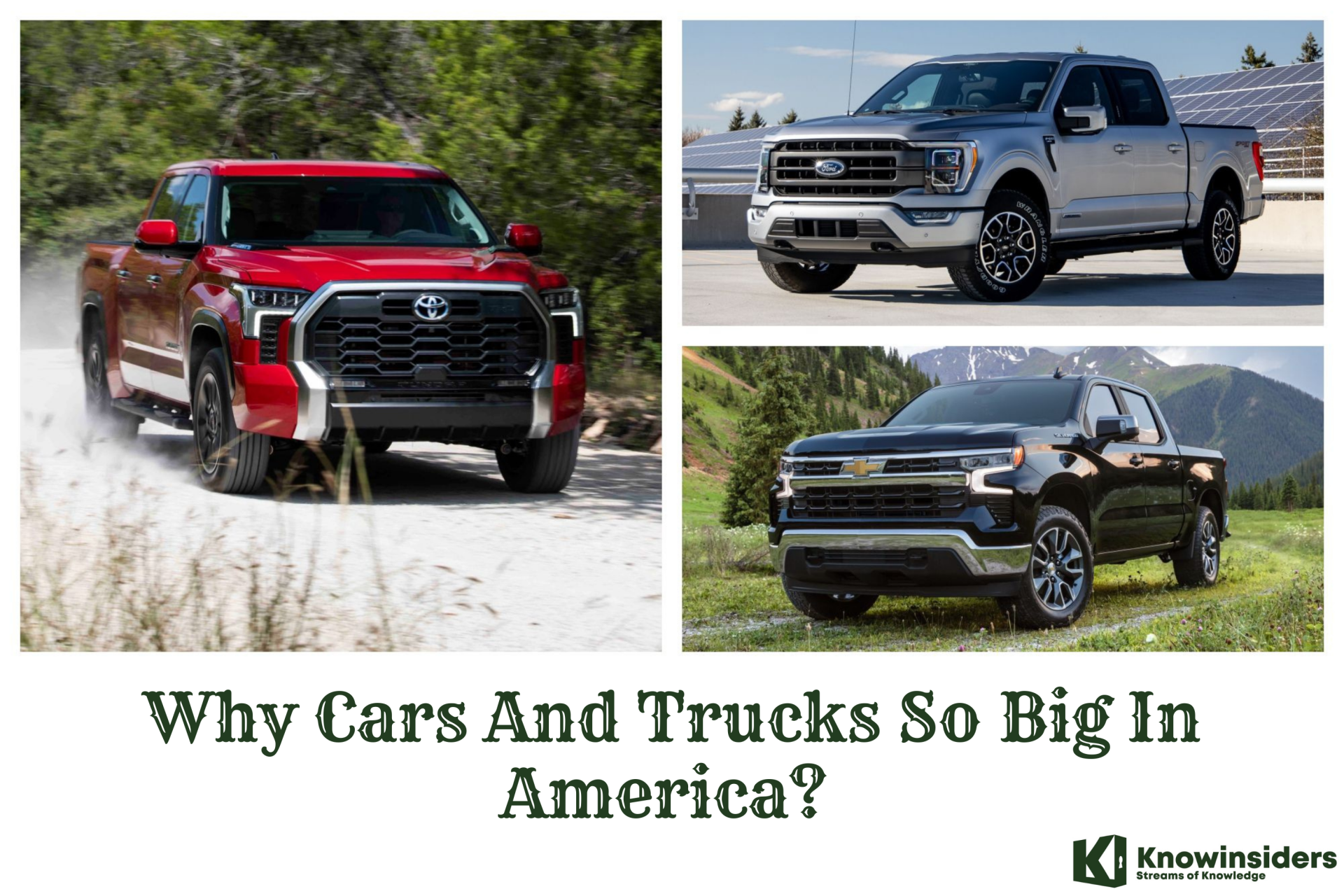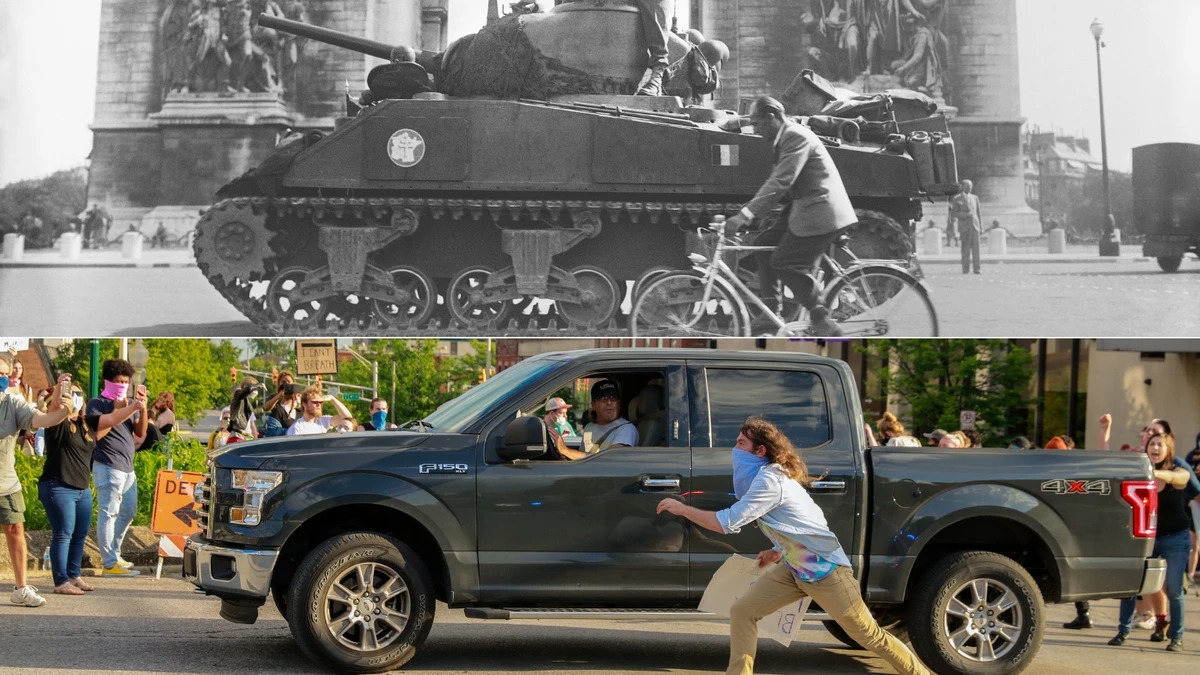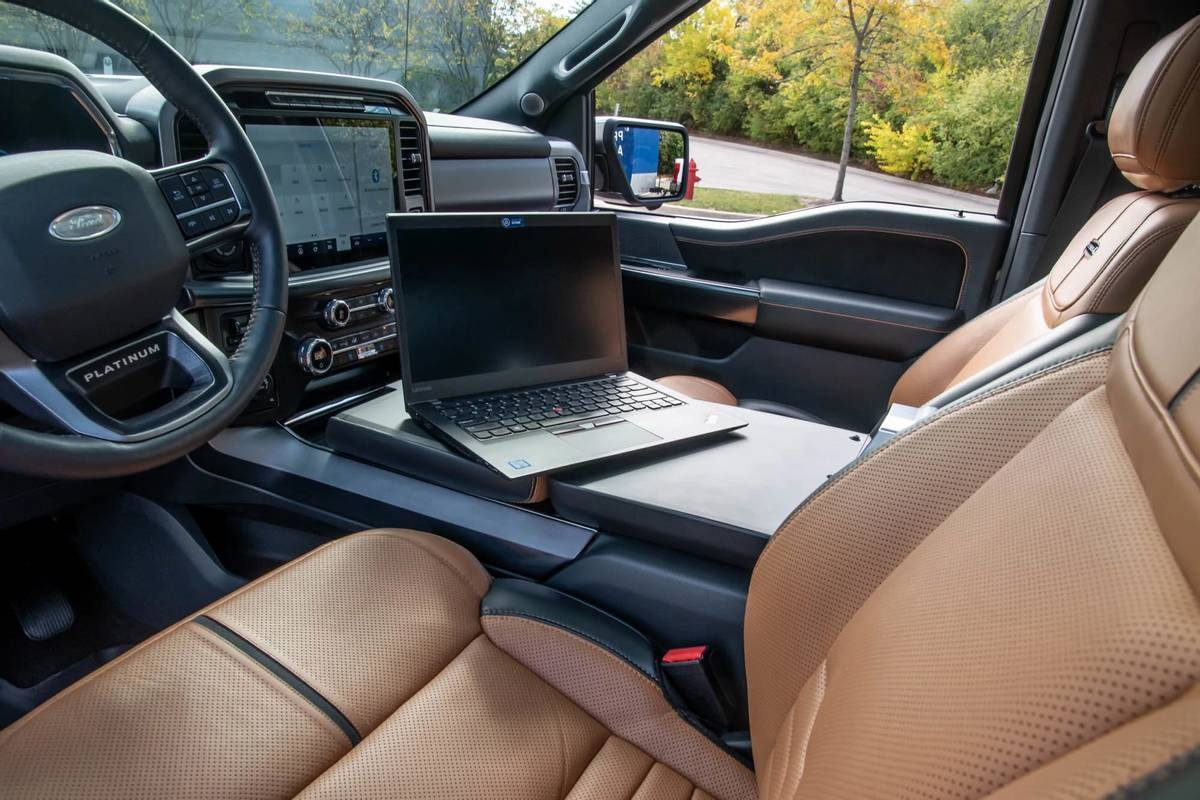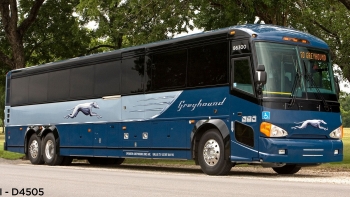Why Cars And Trucks So Big In America?
 |
| Cars And Trucks Are So Big In America |
In the U.S., pickup trucks dominate the country's best-selling vehicle lists year after year. The top three models alone account for about 13 percent of all vehicles sold. And SUVs outsell sedans two to one. The popularity of bigger vehicles is a major cause of rising pedestrian and cyclist deaths.
Still, the degree to which American vehicles are now literally comparable in size to actual tanks is a fact that, like so much else in American life, is celebrated by some and condemned by others. The danger such huge vehicles pose to both other drivers, non-drivers, and the environment are well-documented. But people buy these expensive, impractical vehicles nonetheless, in huge numbers—not in spite of the fact they are basically tanks, but because of it.
Trucks are still gaining ground in the U.S. and world markets. Despite all the growth of electric vehicles around the world, these full-sized pickups continue to rise in sales in the American automotive market.
In 2017, there were 2.8 million new pickup models sold in the U.S. Compared to 2016, that makes a 4.85% increase in sales—and they don’t show any signs of slowing down anytime soon.
let's take a look to know the reason why Americans are obsessed with pickup trucks and why they love so big cars and trucks!
Do Americans Drive Too Much?
Even though the U.S. traffic fatality rate per mile driven has fallen by two-thirds in the last 50 years, America today still has the deadliest road system per capita in the developed world. Much of the improvement from safer driving and better emergency care has been wiped out by increases in total traffic.
The American approach to traffic safety has emphasized seatbelt use, vehicle standards, and reducing drunk driving. What has been lacking is any effort to reduce driving mileage and enable more people to get around by safer means. And that’s exactly what the U.S. needs to do to make further gains in safety, according to a new report from the American Public Transportation Association.
Riding transit is much safer than getting around in a car. According to APTA, the fatality risk per mile traveled for bus passengers is 30 times lower than car occupants. For rail passengers, the risk is 20 times lower.
But federal safety policy has largely neglected how transit — or policies aimed at reducing driving in general — can play a role in reducing America’s staggering traffic death toll.
Which State Drive the Most and Least
Wyoming is pulling far ahead of the competition when it comes to which U.S. states do the most driving. According to numbers by the Federal Highway Administration analyzed by the website Green Car Congress, vehicle miles exceeded 18,000 per Wyoming resident.
Large and rural states led in the ranking, with one exception: Alaska was part of the states where Americans did the least driving in 2018. Despite being a vast landmass, much of the state could be classified as wilderness rather than being rural, in turn causing most residents only to travel through the parts of the state that are more densely populated, bringing down the length of trips. Harsh weather conditions in the winter also reduce travel or cause residents to switch to other modes of transportation.
Smaller states and those that are more urban for other reasons racked up the least vehicle miles per resident. After Washington D.C., where residents only traveled approximately 5,000 vehicle miles per year, New York state, Rhode Island and Hawaii were the places where people drove the least.
Why Are Cars and Pickup Trucks So Big in America?
 |
| Photo: vice |
Put simply, most Americans are no longer willing to squeeze into small cars despite their affordability and fuel efficiency. With gas prices low and SUVs providing the allure of a higher stance and more cargo space, subcompact car sales fell 50% in the first half of 2020, compared with the same period a year earlier.
Easier to Design
A common problem with auto engineers is trying to fit all the components into such a small envelope. As more features become standard on modern vehicles, these designers have an even tougher time.
How can you fix this problem? Make the envelope way bigger.
By making trucks larger, designers can take a breather when it comes to cramming in all the different pieces. Cutting down on design time serves multiple purposes.
Safer
If you brush up on your physics, you’ll remember that larger, heavier items always win in crashes. If you hold a rock in one hand and an egg in the other then clap your hands together, the rock will always be okay in the end.
On the road, this means larger and heavier trucks are much safer. They can hold up after a crash while keeping everyone in the cab safe.
Another way that they’re safer is due to the fact that they’re easier to spot. It’s hard to miss a massive pickup if you’re pulling onto a highway or changing lanes. This added visibility helps truck drivers avoid accidents.
More Powerful
Who doesn’t love more power? In the case of pickup trucks, bigger trucks tend to have more horses under the hood.
More Cost-Effective
The design time is dramatically reduced with a larger truck. Well, this time-saving converts into cost savings that the consumer sees.
Designing and prototyping a truck takes a ton of money and time for auto manufacturers. Since they’re not super into charity, they simply adjust the sticker price on all of their vehicles to make up this money.
In other words, a long and tedious design will cost you money.
Higher Reliability
Another benefit of working with more space is that parts of your truck can be laid out more intentionally and logically. As a result, your pickup will have a higher level of reliability.
There are times where auto designers have to make unwise design decisions simply because they don’t have the room to work. This could result in parts butting up against each other and failing or creating friction and breaking.
Plus, the engines are way more reliable when they get bigger. For a small engine to make up power, they might need to include a supercharger or additional pieces which wind up just being extra things that can break.
Better Hauling and Towing Capacities
Hauling and towing capacities are two figures that consumers tend to really care about. It refers to how much weight you can throw in the bed of your truck or attach to the hitch at the rear of your pickup.
Typically, these capacities are a big selling point of different pickups. Owners want to know that they can confidently lug around the equipment that they need to.
When frameworks get beefier and trucks get bigger, then the hauling and towing capacities go up.
More Space for Cargo
The bed of the truck is where most people put their cargo. With a larger truck, the bed size is typically larger as well. As such, you can fit more equipment and gear.
People don’t want to be limited when it comes to space in their new pickup truck. Manufacturers know this, so they provide more space by making their trucks bigger.
This is also why the ultra heavy-duty line of trucks exists in the first place.
Added Passenger Space
Not only is there more room for your gear, but there’s more room for you, your friends, and your family inside.
With larger trucks, you get more headroom, more legroom, and more space to spread out.
In a lot of the bigger trucks, you feel tiny sitting in an area with so much room around you. Extended crew cabs also give you seating behind the driver’s seat so more people can jump into your ride.
Better Comfort and More Luxuries
While there’s no line of “luxury pickup trucks”, plenty of trucks have luxury options. This is especially true in the larger ones. With more space, the designers can give you more comforts and luxuries.
Better Off-Roading
A taller, wider, heavier vehicle will always do better in off-roading compared to an option with the opposite features.
Since many trucks are used on worksites or in tough climates, the size increase makes a lot of sense.
4×4 trucks were specifically made for driving in these types of conditions. It shouldn’t surprise you that almost all of the biggest pickups have 4WD for that very reason.
Why Americans Are Obsessed With Trucks?
 |
| Photo: automototale |
To understand America’s love of trucks, you must know where the U.S. came from. In the early 1800s, when many Americans were farmers, the dream was simple: a land so big and so rich with fertile soil that every family could have their own farm. Of course, homesteads aren’t free.
It took a lot of hard work to produce food and then take the excess to market. The first pickup truck equipped the common farmer — 35% of the population in the early 1900s — to haul a thousand pounds of produce instead of a few hundred. Add headlights, and the workday extended into the night.
The pickup may be a glorified wheelbarrow, but it was the best thing that ever happened to American independent homesteading.
Once every farm had a truck, roads were the next logical option. Unlike Europe, already paved with narrow cobblestone and brick roads, America had a chance to do it “right” for a new era of transportation.
Trucks could travel at high speeds with produce that no longer spoiled on the way to market. Without pickups, they may not have so many wonderful paved highways crisscrossing every shipping path in the nation.
The entrepreneurial spirit
You may think the pickup truck’s popularity would fade as the percentage of farmers decreased. But Americans have not forgotten the value of having a multi-purpose vehicle. In America, entrepreneurs are a respected group. What’s the single most utilitarian vehicle for providing local services? The truck.
From landscapers to electricians, a large percentage of pickup trucks you see today are sporting company logos. They’re still working but not for produce. In fact, high-end trucks were even considered exempt during days of vehicle luxury taxes.
Trucks combine utility and luxury
Trucks have since seen more than a few luxury upgrades. They have four doors and extended cabs to transport the whole family. They have USB chargers and BlueTooth connectors, touch-screen interfaces and drive-assist software because why skimp when it comes to your pickup?
Living the dream
Americans own pickups because they are the ultimate union between the things they love most: utility and freedom. You can race or “mud” your pickup. You can start your own business or move your entire home with a full bed and a trailer hitch. Heck, you can pitch a tent in the bed and go truck-camping. Pickup trucks embody the American dream.
Are Cars Getting Bigger And Heavier?From all the vehicles looked at, more than half saw their weight increase by over 35% when compared to their first generation. Only two cars didn’t see a big jump in weight through the years: the Porsche Cayenne, whose weight didn’t change, and the Audi Q7, the only one that got lighter, yet only by 6%. Though the Range Rover gained 658kg, this was a mere 36% weight increase when compared to one car that saw its weight rise by 64%: the Mini Cooper! You can tell there isn’t much ‘mini’ about the Mini Cooper anymore: it saw the biggest length and wheelbase increase of all the models analyzed. There are three main reasons, starting with the fact that smaller cars used to be cheaper to produce, and consequently more affordable. Nowadays, production costs are similar for large and small vehicles, so there is a higher number of larger cars on the market. Additionally, finance deals are available to most, so it’s easier to buy big luxury cars. Speaking of luxury vehicles, exotic cars are also to blame. Most cars on British roads used to be generally designed and produced in the UK, with the slim English streets in mind. In the last decade, the number of imported cars has increased exponentially: from 2007 to 2017 the number of imported vehicles increased by over 45%. These vehicles tend to be larger, with wide freeways in mind when designing them. The last reason boils down to one word: safety. If you think back to the safety features in a car from the 60’s you know we’ve come on leaps and bounds, but all those additions need space. The result is bigger cars with crumple zones, and that accommodate lateral and frontal airbags. |
 How Old Is The United States - Birthday of America? How Old Is The United States - Birthday of America? Some people are puzzled by the question: "How old is the United States?" and "Birthday of America", but dont worry, we got you covered in ... |
 What Is The Biggest and Smallest State in America? What Is The Biggest and Smallest State in America? What state is the biggest in the US? That’s a big question. Read on this article and you will find the answer. |
 How to Take A Bus for Traveling in America? How to Take A Bus for Traveling in America? In the United States, to save money, travelling by bus, particularly between major towns and cities, is a good choice. Today, Knowinsider will introduce you ... |























